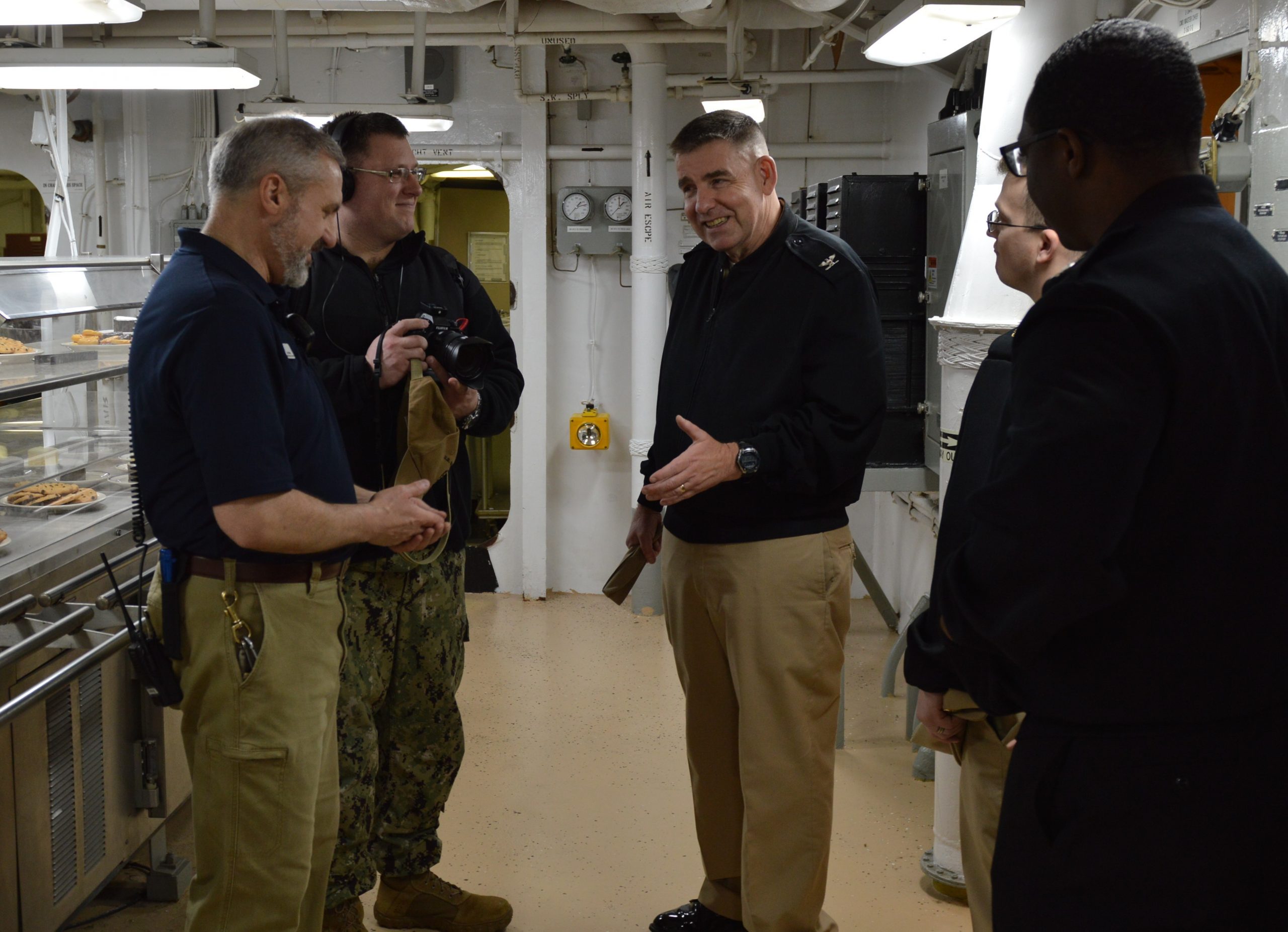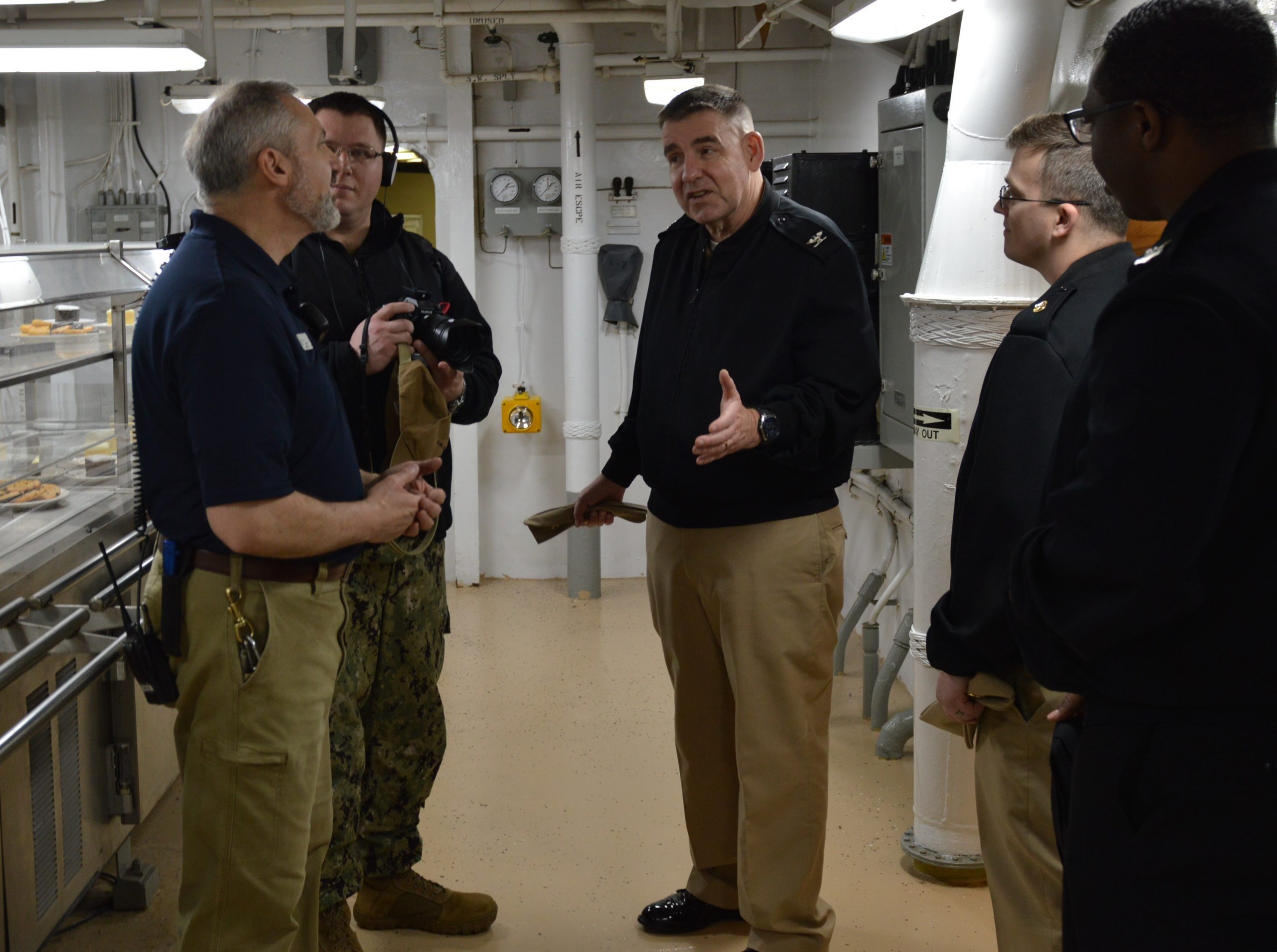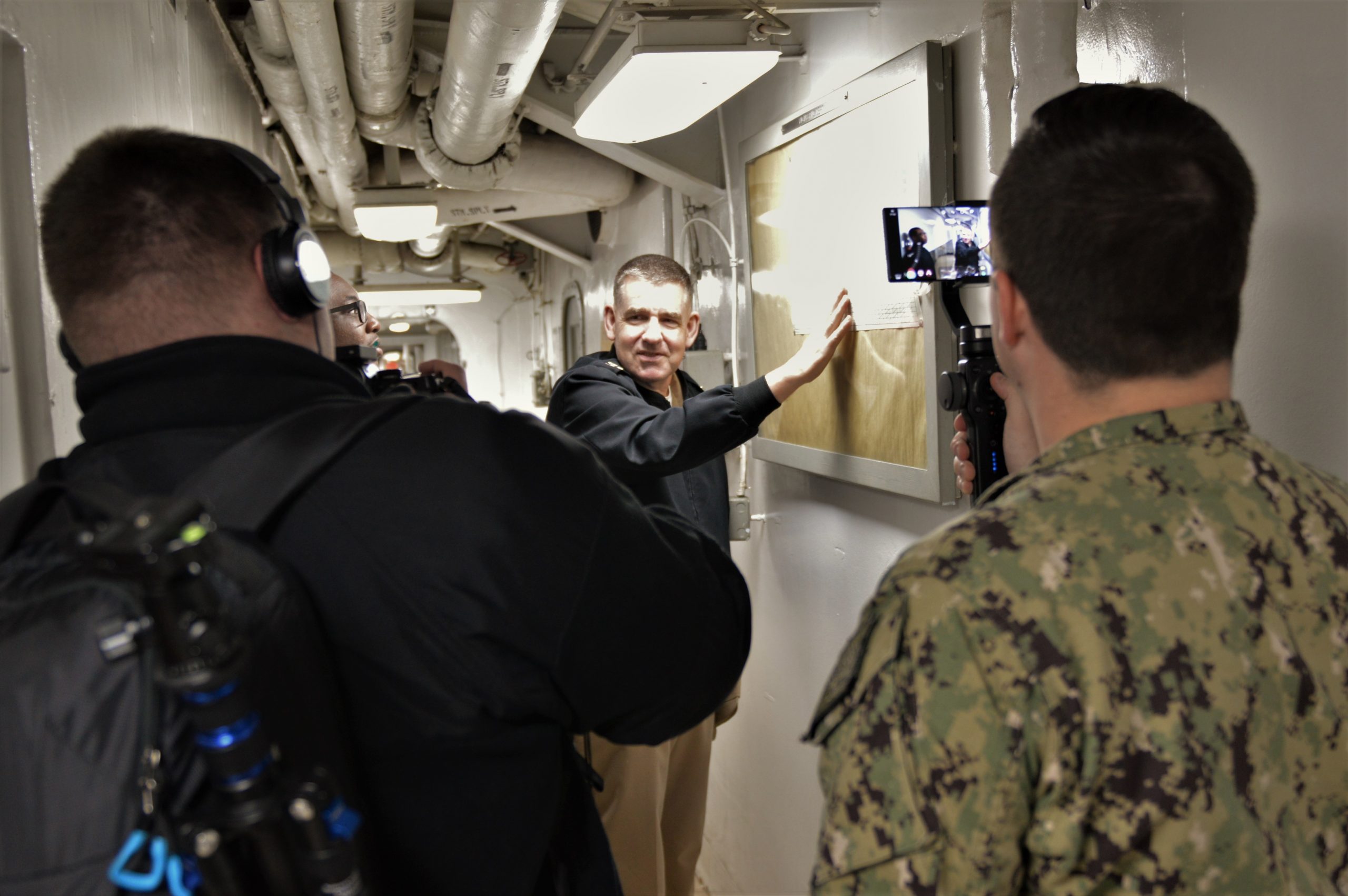By Robbin Laird and Ed Timperlake
The advantage of visiting two startup commands – C2F and Allied JFC Norfolk – under one Vice Admiral is that one can see how the 21st century navy is being shaped. We started our March visit by meeting with VADM Lewis’s Chief of Staff for C2F, CAPT Hallock Mohler, who gave us a tour d’horizon of the challenges of setting up the new command and navigating a way ahead.
Captain Mohler is a four-decade U.S. Navy veteran whose significant experience has been crucial in setting up the command. When we asked him which ship was his favorite one on which to serve, his answer came quickly: The USS Wisconsin. Going from a battleship to shaping the newest command in the Navy is definitely an interesting path.
When we visited his office, he was working from an old desk and with no secretary. The command wishes to be lean, and frankly, everything we saw when visiting it, was that the command clearly is focused on driving innovation from the standpoint of having a lean command structure.
We followed up with the visit on-site with a phone interview this month to discuss the startup approach and to look back at his career, as he is retiring from the Navy this month. He has very significant leadership management experience at all ranks in the U.S. Navy and his experience has been a key part of what he has brought to the process of standing up the new command. Among those assignments: Director of Management at JFC Norfolk, Department of Defence, Executive Security in the office of OSD, and Director for Training and Quality Assurance, Navy Recruiting command.
We started by asking him, how one went about finding the right talent for a new command.
Captain Mohler: “You start by looking for the right people in terms of having vision, and capabilities to shape something new and innovative. What you don’t do is pigeonhole people in terms of this person is a human resources person, this one is a public affairs person, and so on. You are looking for people who have experienced growth and would nurture it in the command. Not every starting quarterback from a college football team can go to the pros and play quarterback in the pros. Sometimes they’re a wide receiver.
“We were given no blueprints. We were given no resources. We were just told to do it. And it’s all about relationship building, and that’s all it is. And we’re not going to know how good we really are until about 20 years from now.
“We have lieutenants, lieutenant commanders, and commanders working alongside of officers and enlisted from foreign nations who will take that experience to their next jobs and will build in a capability for foreign officers to work more effectively with us or vice versa.
“And I think that’s really what’s Admiral Lewis’ vision, namely getting the people that have gumption, the people that don’t mind working hard, the people that don’t mind figuring out how to work together to shape new capabilities for the United States and our allies.”
We then asked him to go back to his long career and highlight what he considered major changes which have energized the Navy as an institution. He had pride in his service that recognizes a constant quest for meritocracy is a touchstone for the future.
Captain Mohler: “That it doesn’t matter what color skin you have. You can do anything you have to. It doesn’t matter that you’re a female, male, or what your gender says, or your deers marker says, you can do a job. It doesn’t matter. Sailors can do anything, and the opportunity’ to do so in the Navy is incredible.
A key lesson of leadership is the saying “if you cannot delegate you are dead.”
“But you have to allow for creativity. We have too much micromanaging because of social media and because of electronics, And I think eventually we’re going to get rid of that, and we’re going to start going back to letting people be leaders. The zero-defect accountability on leadership, I think that’s going to go away eventually.”
“And during my Naval career, every command I’ve ever gone through, it’s been a different chapter in my career life book. It’s about ready to close, but it’s not going to close for good because it continues on because I feel like I’m a recruiter for the United States Navy and for the military until I have no more breath.
“I have seen incredible change during my 41-year career. But one thing has not changed – we need to be the best fighting force, and that means shaping a meritocratic force which draws from our innovative society going forward.”





